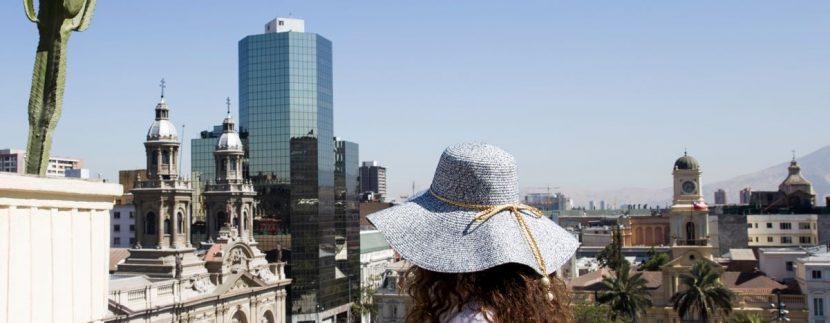6 Reasons Why This Less Visited Latin American Country Should Be On Your Bucket List

[ad_1]
Last Updated
With its hospitable people, boundless natural wealth, and high affordability, it’s not hard to see why millions of Americas flock to Latin America every year for their international vacations.
The subcontinent is the preferred pick for U.S. citizens seeking adventure beyond their own borders, but with a majority choosing to lounge by the poolside in Mexico or sunbathe on a Brazilian beach, this one incredible country remains overlooked.
In this article, you will learn 6 reasons why Chile should be on your bucket list and why it may well be the region’s most underrated destination:

Beautiful Pacific Beaches
We know Chile may not be the first country that comes to mind when you think of a Latin American beach break, especially when there are other bigger players in the vicinity, but this is a country with a surprisingly elongated coastline, stretching for 6,435 km along the Pacific Ocean.
In sum, it is a coastal paradise, with countless swimming and surfing spots and modern seafront developments most Americans are not even aware exist.
As Chile is located in the South Pacific, the seas may not be as warm as in Cabo or other North Pacific spots, but they are still great for swimming and practicing water sports, especially in the hot summer months when temperatures soar above 30°C (86°F).

The most beautiful golden sand beaches of Chile can be found around Viña del Mar, a resort area known for its casinos and entertainment venues, and Iquique, a vibrant coastal city in the North, close to the border with Peru.
Bahia Inglesa, literally translated as English Bay, is also famous for its Caribbean-like waters and white sands, and it’s one of the warmest bathing sites along the Chilean coast.
World-Class City Breaks
Chile’s vibrant and incredibly diverse cities are a huge part of its tourist offer.
Top 5 Travel Insurance Plans For 2023 Starting At $10 Per Week

Santiago de Chile, the sprawling, modern capital, is the country’s top-rated city break, what with its clusters of skyscrapers set against the stunning backdrop of the Andes, quirky cafes serving some of the most delicious coffee you will try in your life, and filled with street art.
The aforementioned Viña del Mar is an up-and-coming sunny hub distinctive for its European-style architecture and the vineyards within driving distance of the city that are sure to keep wine stewards, or just wine lovers in general, busy for days.
The early 20th-century fairytale Wulff Castle, one of a handful in South America and certainly one of the most beautiful, can also be found in Viña del Mar.

As the second largest conurbation area in Chile, Valparaiso is worthy of a nod, too. A youthful city home to prestigious universities, colorful, postcard-ready streets, and Bohemian districts, which attract young revelers and musicians at weekends, it is undoubtedly the Jewel of the Pacific.
The Historic Quarter of Valparaiso, where several colonial-era buildings can be found, was added to UNESCO’s ever-expanding list of World Heritage Sites.
Diverse Nature
Chilean nature is perhaps the country’s biggest attraction.

From vast desert plains where the absence of urban areas allow for an unobstructed, perfectly clear view of the starry night sky and constellations, to the lush green valleys and volcanic reserves, to the icy wastelands of the Patagonia, it boasts many diverse, breathtaking natural vistas.
The Atacama Desert is probably Chile’s most famous landmark, extending for a whopping 1,600 km west of the Andes, where the salt plateaus seem to reflect the blue skies above as if you’re walking on clouds.
It is the most popular natural world excursion undertaken by tourists.

There are many other sites not to be missed on a Chilean adventure, though, including the Conguillío National Park, where numerous hiking trails traverse a snowy, Andean territory, the otherworldly El Colgante Hanging Glacier, a more remote, yet stunning spot located within Queulat National Park, and the Torres del Paine National Park, in the Chilean Patagonia, a region extremely close to the South Pole.
Easter Island
Although they are usually perceived as separate destinations, Easter Island and Chile, in fact, form part of a single sovereign state.

Easter Island is an autonomous community off the mainland of Chile with a high degree of self-governance, and an incredibly isolated territory in Polynesia, populated by 7,750 natives who speak Rapa Nui as their mother language.
Flights from Santiago de Chile to Easter Island take about 5h40, and visitors are encouraged to register in advance as accommodation options and spots on group tours are extremely limited.
Easter Island’s most iconic sight, of course, is the 900 oversize head monuments scattered across the fields, resting on stone pedestals called moai.

The most photographed collective of moai, and the one most easily accessible to tourists, is the Ahu Tongariki.
Recently, Easter Island lifted its pandemic-era entry regulations, which were different from those enacted by the Chilean mainland, making it easier for foreigners to enter.
Chile Is Highly Developed
The statement to follow may be a surprise to some readers, but based on social indicators such as health, education, and human development, Chile is the most developed country in all of Latin America and one of the most highly developed in the Americas as a whole.

It is defined as having a high-income economy and as being an economically and politically stable nation in a region where coups d’etat, and political turmoils are rampant, as is the case in Peru, its Northern neighbor.
For travelers, Chile’s status as a fast-developing state means they should expect well-equipped modern cities with a functioning transportation system, improved accessibility, and, more importantly, more safety when traveling the country, as stable countries tend to be less dangerous for tourists.
It Is Incredibly Safe
Developing on the previous topic, Chile is not one of, but the safest country in Latin America by any standards.

It has the second lowest homicide rate in all of the Americas, ranking behind Canada only, and according to the Organized Crime Index (OCI), it has a ‘criminality score’ of 4.60, the 22nd highest in the Americas, and only 9th highest out of 12 South American countries.
Data gathered by the U.S. State Department seems to corroborate those findings, as they have listed Chile as a Level 2 destination on their Travel Advisory listings, only one level lower than the best possible classification of Level 1.
This means Americans must exercise ‘increased caution’ when visiting Chile due to the common risk of street crime, shared by all countries in the Level 2 rank, including France and the United Kingdom.

In this case, general safety advice applies, such as being aware of your surroundings, especially in crowded places, and avoiding unnecessary displays of wealth.
Chile is open and restriction-free, and regular daily flights connect numerous cities in the U.S. to the Chilean capital, including Atlanta, Miami, New York-JFK, Houston-International, and others.
Traveler Alert: Don’t Forget Travel Insurance For Your Next Trip!
↓ Join Our Community ↓
The Travel Off Path Community FB group has all the latest reopening news, conversations, and Q&A’s happening daily!

SUBSCRIBE TO OUR LATEST POSTS
Enter your email address to subscribe to Travel Off Path’s latest breaking travel news, straight to your inbox.
This article originally appeared on TravelOffPath.com
[ad_2]
Source link






